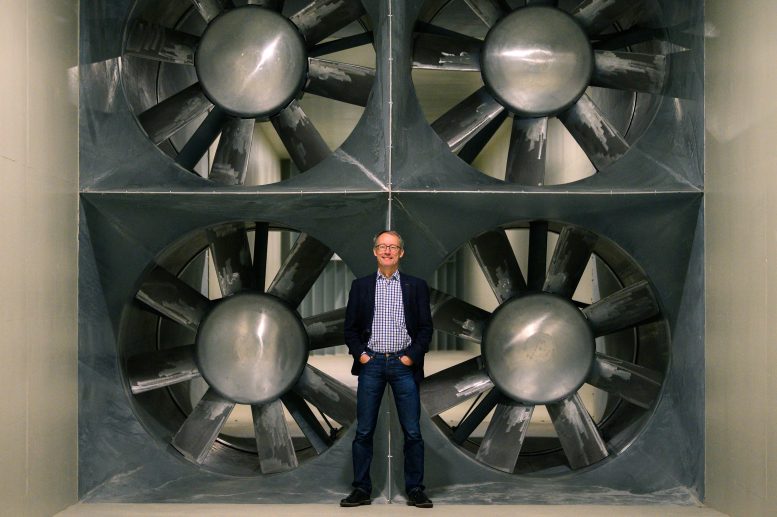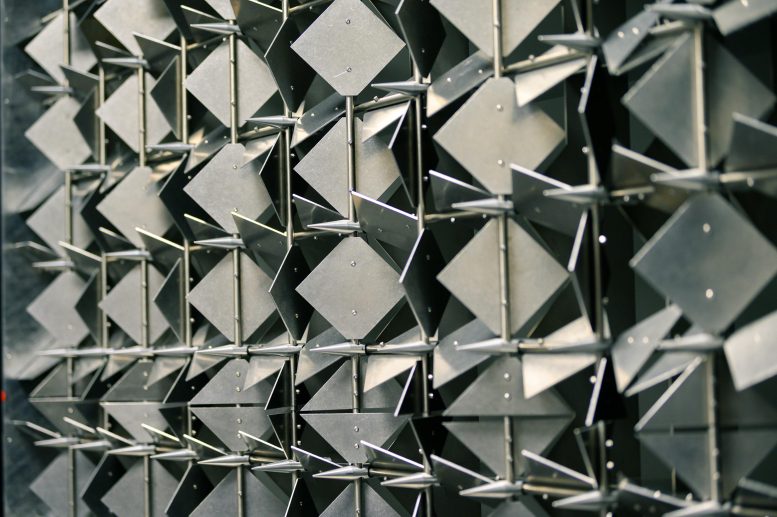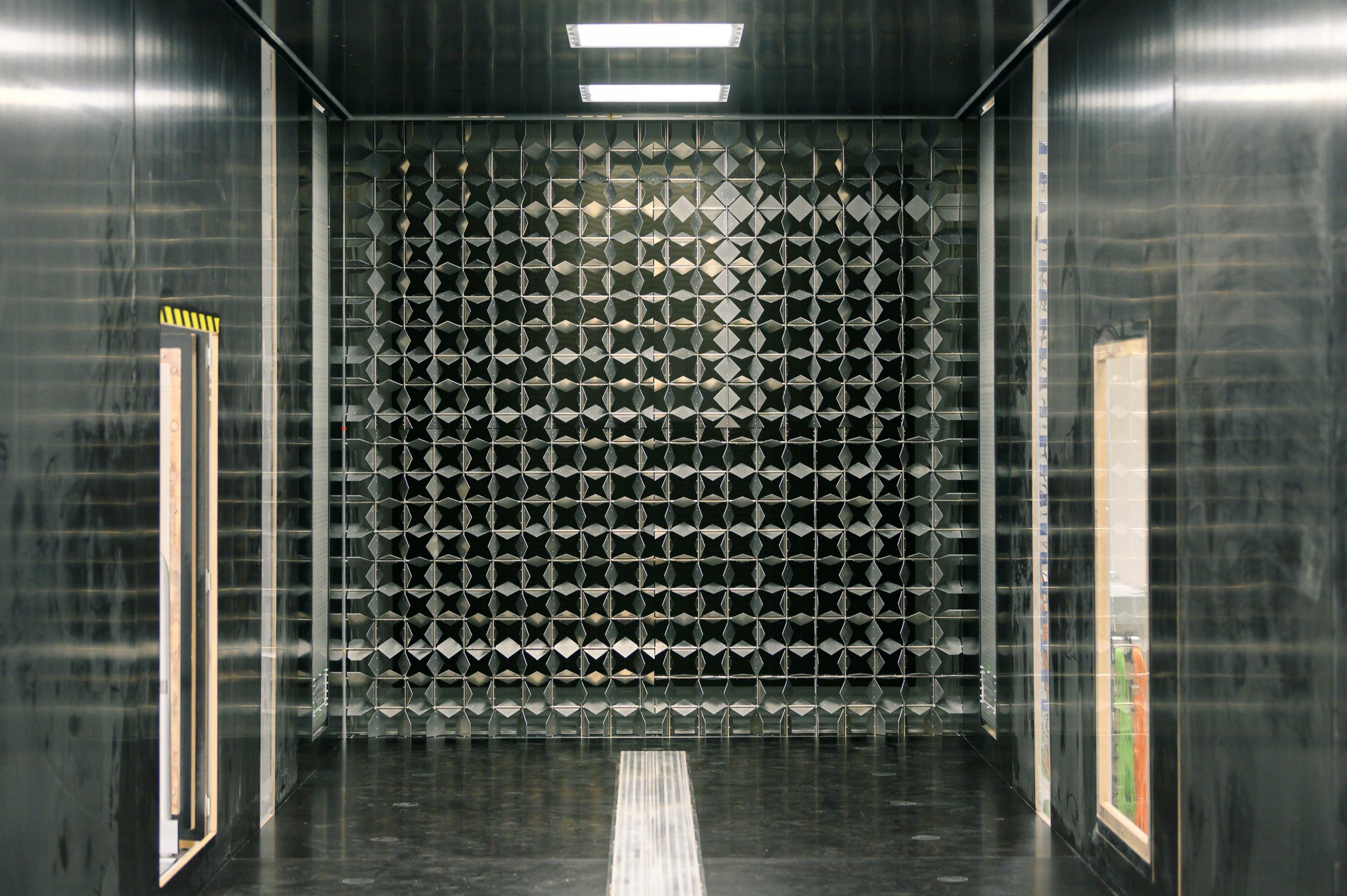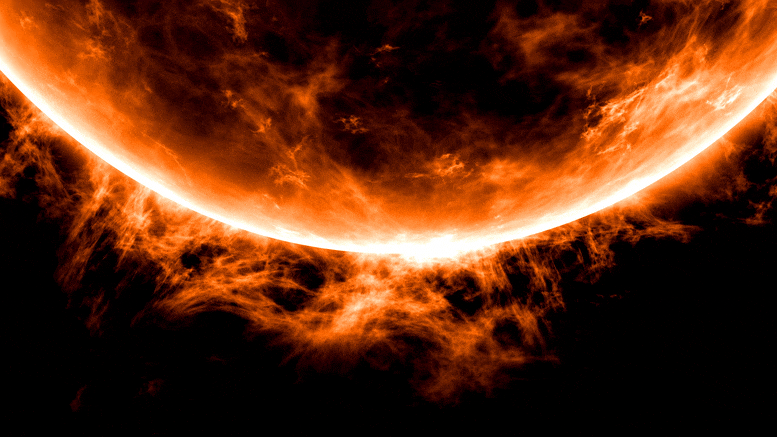The active network in the wind tunnel can stir up air currents to create realistic storm turbulence. Photo credit: University of Oldenburg / Mohssen Assanimoghaddam
Turbulence is a ubiquitous phenomenon – and one of the great secrets of physics. A research team from Oldenburg has now succeeded in generating realistic storm turbulence in the wind tunnel of the Center for Wind Energy Research (ForWind).
Strong storms often seem to cause accidental destruction: while the roof tiles of a house are being blown away, the neighboring property must not be damaged at all. What causes these differences are gusts of wind – or, as physicists say, local turbulence. It results from large atmospheric currents, but so far it is impossible to predict in detail.
Experts from the University of Oldenburg and the Université de Lyon have now paved the way for the investigation of small turbulences: The team around the Oldenburg physicist Prof. Dr. Joachim Peinke succeeded in generating turbulent currents in a wind tunnel. The currents were similar to those in great storms. The team has found a way to literally cut a piece out of a storm, the researchers report in the journal Physical Review Letters. “Our experimental discovery makes our wind tunnel a model for a new generation of such systems, in which, for example, the effects of turbulence on wind power systems can be realistically examined,” says Peinke.
The most important parameter that characterizes the turbulence of a flow is the so-called Reynolds number: This physical quantity describes the ratio of kinetic energy to frictional forces in a medium. In simple terms, one can say: the larger the Reynolds number, the more turbulent the flow. One of the biggest puzzles of turbulence is statistics: extreme events like strong, sudden gusts of wind are more common when you look at smaller scales.

Joachim Peinke in front of the four fans of the wind tunnel. The turbines can generate wind speeds of up to 150 kilometers per hour. Photo credit: University of Oldenburg / Mohssen Assanimoghaddam
Unsolved equations
“The turbulent eddies of a flow become stronger on a smaller scale,” explains Peinke, head of the research group Turbulence, Wind Energy and Stochastics. In a strong storm – that is, when the Reynolds number is high – a fly is therefore affected by much more gusty flow conditions than, for example, an airplane. The specific reasons for this are not known: The physical equations that describe liquids have not yet been solved with regard to turbulence. This task is one of the famous Millennium Problems in mathematics that the Clay Mathematics Institute in the United States spent a million dollars each solving.
In the large wind tunnel of the Center for Wind Energy Research (ForWind), the Oldenburg team has now succeeded in generating more turbulent wind conditions than ever before. Compared to previous experiments, the researchers increased the Reynolds number by a factor of 100 and simulated conditions that were so similar to a real storm. “We don’t see an upper limit yet,” says Peinke. “The generated turbulence is already very realistic.”

Almost a thousand diamond-shaped aluminum plates can be rotated in two directions with 80 drive shafts. Photo credit: University of Oldenburg / Mohssen Assanimoghaddam
Experiments in the wind tunnel
The Oldenburg wind tunnel has a 30 meter long test track. Four fans can generate wind speeds of up to 150 kilometers per hour, which corresponds to a category 1 hurricane. In order to generate a turbulent air flow, the researchers use a so-called active network, which was developed for the special requirements in the large Oldenburg wind tunnel. The three by three meter structure is located at the beginning of the wind tunnel and consists of almost a thousand small, diamond-shaped aluminum wings. The metal plates are movable. They can be rotated in two directions over 80 horizontal and vertical shafts. In this way, the wind researchers can selectively block and reopen small areas of the wind tunnel nozzle for a short time, causing air to swirl. “With the active network – the largest of its kind in the world – we can generate many different turbulent wind fields in the wind tunnel,” explains Lars Neuhaus, who is also a member of the team and played a key role in this study.
For the experiments, the team varied the movement of the grid in a chaotic way, similar to turbulent air currents. They also changed the performance of the fans irregularly. Thus, in addition to small-scale turbulence, the air flow created a greater movement in the longitudinal direction of the wind tunnel. “Our most important finding is that the wind tunnel flow combines these two components into perfect, realistic storm turbulence,” explains co-author Dr. Michael Hölling. The physicist is also the chairman of the international wind tunnel examination committee of the European Academy for Wind Energy (EAWE). This storm turbulence occurred 10 to 20 meters behind the active network.
Swirls on a small scale
“By adapting the network and the fans in the wind tunnel, we created large turbulences of around ten to one hundred meters in size. At the same time, small turbulences with dimensions of a few meters or less occurred spontaneously. However, we still don’t know exactly why, ”explains Hölling. As he and his colleagues report, this new approach makes it possible to reduce the atmospheric turbulence relevant for wind turbines, airplanes or houses to a size of one meter in the wind tunnel. In this way, researchers will be able to carry out realistic experiments with miniaturized models in the future – in which extreme gusts occur just as often as in real storms.
Reference: “Generation of atmospheric turbulence with an unprecedentedly large Reynolds number in a wind tunnel” by Lars Neuhaus, Michael Hölling, Wouter JT Bos and Joachim Peinke, October 9, 2020, Physical Examination Letters.
DOI: 10.1103 / PhysRevLett.125.154503
Funding: Federal Ministry for Economic Affairs and Energy in Germany, Ministry for Science and Culture of Lower Saxony, German Research Foundation.



